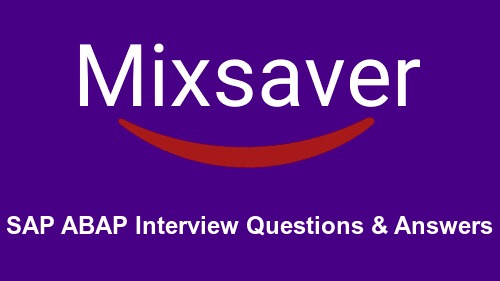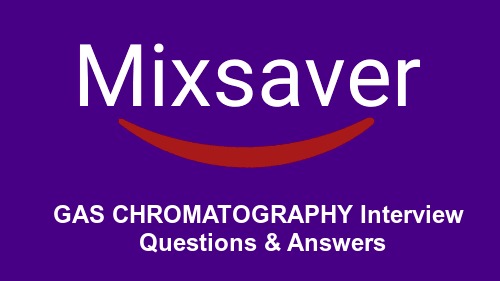1. What is a Data Class?
The Data class determines in which tablespace the table is stored when it is created in the database.

2. What is a Size Category?
The Size category describes the probable space requirement of the table in the database.
3. How Many types of size categories and data classes are there?
There are five size categories (0-4) and 11 data classes, only three of which are appropriate for application tables:
APPL0 - Master data (data frequently accessed but rarely updated)
APPL1 - Transaction data (data that is changed frequnetly)
APPL2 - Organisational data (customizing data that is entered when system is configured and then rarely changed)
4. What are control tables?
The values specified for the size category and data class are mapped to database-specific values via control tables.
5. What is the function of the transport system and workbench organiser?
The function of the transport system and the Workbench Organizer is to manage any changes made to objects of the ABAP/4 Development Workbench and to transport these changes between different SAP systems.
6. What is a table pool?
A table pool (or pool) is used to combine several logical tables in the ABAP/4 Dictionary. The definition of a pool consists of at least two key fields and a long argument field (VARDATA).
7. What are pooled tables?
These are logical tables which must be assigned to a table pool when they are defined. Pooled tables can be used to store control data (such as screen sequences or program parameters).
8 .What is a table cluster?
A table cluster combines several logical tables in the ABAP/4 Dictionary.Several logical rows from different cluster tables are brought together in a single physical record. The records from the cluster tables assigned to a cluster are thus stored in a single common table in the database.
9. Which objects are independent transport objects?
Domains, Data elements, Tables, Technical settings for tables,Secondary indexes for transparent tables, Structures, Views,Matchcode objects, Matchcode IDs, Lock objects.
10. What are the Data types of the external layer?
ACCP, CHAR, CLNT, CUKY,CURR, DATS, DEC, FLTP, INT1,INT2, INT4, LANG, LCHR,LRAW, NUMC, PREC, QUAN,RAW ,TIMS, UNIT, VARC.
11. What are the Data types of the ABAP/4 layer?
Possible ABAP/4 data types:
C: Character.
D: Date, format YYYYMMDD.
F: Floating-point number in DOUBLE PRECISION (8 bytes).
I: Integer.
N: Numerical character string of arbitrary length.
P: Amount or counter field (packed; implementation depends on hardware
platform).
S: Time stamp YYYYMMDDHHMMSS.
T: Time of day HHMMSS.
V: Character string of variable length, length is given in the first
two bytes.
X: Hexadecimal (binary) storage.
12. How can we set the tablespaces and extent sizes ?
You can specify the extent sizes and the tablespace (physical storage area in the database) in which a transparent table is to be stored by setting the size category and data class.
13. What is a data dictionary ?
Data dictionary is a central source of data in a data management system. Its main function is to support the .It has details about
What data is contained ?
What are the attributes of the data ?
What is the relationship existing between the various data elements ?
14. What functions does a data dictionary perform ?
In a data management system, the principal functions performed by the data dictionary are
Management of data definitions
Provision of information for evaluation
Support for software development
Support form documentation
Ensuring that the data definitions are flexible and up-to-date.
15. A field containing currency amounts (data type CURR) must be assigned to a reference table and a reference field. Explain.?
As a reference table, a system table containing all the valid currencies is assigned or any other table which contains a field with the currency key format. This field is called as reference field.
The assignment of the field containing currency amounts to the reference field is made at runtime. The value in the reference field determines the currency of the amount.
16. What is the significance of Technical settings (specified while creating a table in the data dictionary) ?
By specifying technical settings we can control how database tables are created in the database.
The technical settings allows us to
optimize storage space requiremnets
table access behaviour
buffering required
changes to entries logged
17 What is the significance of Delivery Class ?
- The delivery class controls the degree to which the SAP or the customer is responsible for table maintenance
whether SAP provides the table with or without contents.
determines the table type.
determines how the table behaves when it is first installed, at upgrade, when it is transported, and when a client copy is performed.
18. What is the maximum number of structures that can be included in a table or structure
Nine.
19. What are the two methods of modifying Sap standard tables ?
Append Structures and
Customizing Includes.
20. What is the difference between a Substructure and an Append Structure ?
In case of a substructure, the reference originates in the table itself, in the forma of a statement .include... .
In case of an append structure, the table itself remains unchanged and the refrence originates in the append structure.
21. What are the two ways for restricting the value range for a domain ?
By specifying fixed values.
By stipulating a value table.
22. What is a Match Code ?
Match Code is a tool to help us to search for data records in the system. Match codes are an efficient and user-friendly search aid where key of a record is unknown.
23. What are the two levels in defining a Match Code ?
Match Code object
Match Code Id.
24.What is the maximum number of match code Id's that can be defined for one Match code object ?
36. A match code Id is a one character ID which can be a letter or a number.
25. Can we define our own Match Code ID's for SAP Matchcodes ?
Yes, the numbers 0 to 9 are reserved for us to create our own Match Code IDs for a SAP defined Matchcode object.
26. What is an Update type with reference to a Match code ID?
If the data in one of the base tables of a matchcode ID changes, the matchcode data has to be updated. The update type stipulates when the matchcode is to be updated and how it is to be done. The update type also specifies which method is to be used for Building matchcodes . You must specify the update type when you define a matchcode ID.
27. What are conversion routines ?
Non standard conversions from display format to sap internal format and vice-versa are implemented with so called conversion routines.
28. What are Aggregated Objects
Views, matchcodes, and lock objects are also called aggregate objects because they are formed from several related tables.
29. What is a View ?
A view is a logical view on one or more tables. A view on one or more tables i.e, the data from a view is not actually physically stored instead being derived from one or more tables. A view can be used to summarize data which is distributed among several tables
30. How many types of Views are there ?
Database View (SE11)
Database views are implement an inner join, that is, only records of the primary table (selected via the join operation) for which the corresponding records of the secondary tables also exist are fetched. Inconsistencies between primary and secondary table could, therefore, lead to a reduced selection set.
In database views, the join conditions can be formulated using equality relationships between any base fields. In the other types of view, they must be taken from existing foreign keys. That is, tables can only be collected in a maintenance or help view if they are linked to one another via foreign keys.
Help View ( SE54)
Help views are used to output additional information when the online help system is called.
When the F4 button is pressed for a screen field, a check is first made on whether a matchcode is defined for this field. If this is not the case, the help view is displayed in which the check table of the field is the primary table. Thus, for each table no more than one help view can be created, that is, a table can only be primary table in at most one help view.
Projection View
Projection views are used to suppress or mask certain fields in a table (projection), thus minimizing the number of interfaces. This means that only the data that is actually required is exchanged when the database is accessed.
A projection view can draw upon only one table. Selection conditions cannot be specified for projection views.
Maintenance View ( SE54 )
Maintenance views enable a business-oriented approach to looking at data, while at
the same time, making it possible to maintain the data involved. Data from several
tables can be summarized in a maintenance view and maintained collectively via this
view. That is, the data is entered via the view and then distributed to the underlying
tables by the system.
31. What is Locking ?
When two users simultaneously attempt to access the same data record, this is synchronised by a lock mechanism.When dialog transactions are programmed, locks are set and released by calling certain function modules. These function modules are generated automatically from the definition of so-called lock objects in the ABAP/4 Dictionary.To synchronize the access to a table by setting and removing locks, a Lock object has to be defined in the ABAP/4 Dictionary. Activating the lock object automatically creates function modules for setting and removing locks. These function modules must be included when programming interactive transactions.
32. Advantages And Disadvantages Of Different Types Of Bdc S?
Answer :
Transaction Method:
It is faster than session method.
While executing, it starts from starting.
Session Method:
It is slower than transaction method.
While executing, it does not start from starting.
33. What Are The Events Used In Interactive Reports?
Answer :
There are three events of Interactive Reports:
At PF(nn)
At line-selection
At user-command
34. What Is An Rdbms?
Answer :
RDBMS – Relational Database Management System. It helps to create relationship between two or more table.
35. What is the difference between RFC and BAPI?
BAPI:
1. Just as Google offers Image/Chart/Map APIs OR Facebook offers APIs for Comment/Like, SAP offers APIs in the form of BAPIs. BAPI is a library of function modules released by SAP to the public so that they can interface with SAP.
2. There is a Business Object Associated with a BAPI. So a BAPI has an Interface, Key Field, Attributes, Methods, and Events.
3. Outside world (JAVA, VB, .Net or any Non SAP system) can connect to SAP using a BAPI.
4. Error or Success messages are returned in a RETURN table.
RFC:
1. RFC is nothing but a remote enabled function module. So if there is a Function Module in SAP system 1 on server X , it can be called from a SAP system 2 residing on server Y.
2. No Business Object is associated with a RFC.
3. Non–SAP world cannot connect to SAP using RFC.
4. RFC does not have a return table.
36. What is the difference between SAPSCRIPT and SMARTFORM?
SAPSCRIPT:
1. SAPSCRIPT is client dependent.
2. SAPSCRIPT does not generate any Function module.
3. Main Window is must.
4. SAPSCRIPT can be converted to SMARTFORMS. Use Program SF_MIGRATE.
5. Only one Page format is possible.
6. Such thing is not possible in SCRIPT.
7. PROTECT … ENDPROTECT command is used for Page protection.
SMARTFORM:
1. SMARTFORM is client independent.
2. SMARTFORM generates a Function Module when activated.
3. You can create a SMARTFORM without a Main Window.
4. SMARTFORMS cannot be converted to SCRIPT.
5. Multiple page formats are possible.
6. You can create multiple copies of a SMARTFORM using the Copies Window.
7. The Protect Checkbox can be ticked for Page Protection.
37. What is the difference between Call Transaction Method and the Session method ?
Session Method:
1. Session method id generally used when the data volume is huge.
2. Session method is slow as compared to Call transaction.
3. SAP Database is updated when you process the sessions. You need to process the sessions separately via SM35.
4. Errors are automatically handled during the processing of the batch input session.
Call Transaction:
1. Call transaction method is when the data volume is low
2. Call Transaction method is relatively faster than Session method.
3. SAP Database is updated during the execution of the batch input program.
4. Errors should be handled in the batch input program.
38. What is the difference between BDC and BAPI?
BAPI:
1. BAPI is faster than BDC.
2. BAPI directly updates database.
3. No such processing options are available in BAPI.
4. BAPI would generally used for small data uploads.
5. For processing errors, the Return Parameters for BAPI should be used.This parameter returns exception messages or success messages to the calling program.
BDC:
1. BDC is relatively slower than BAPI.
2. BDC goes through all the screens as a normal user would do and hence it is slower.
3. Background and Foreground processing options are available for BDC.
4. BDCs would be preferred for large volumes of data upload since background processing option is available.
5. Errors can be processed in SM35 for session method and in the batch input program for Call Transaction method.
39. What is the difference between SAP memory and ABAP memory?
SAP Memory
1. When you are using the SET/GET Parameter ID command, you are using the SAP Memory.
2. SAP Memory is User Specific. -> What does this mean?àThe data stored in SAP memory can be accesses via any session from a terminal.
ABAP Memory:
1. When you are using the EXPORT IMPORT Statements, you are using the ABAP Memory.
2. ABAP Memory is User and Transaction Specific.What does this mean? -> The data stored in ABAP memory can be accessed only in one session. If you are creating another session, you cannot use ABAP memory.
40. What are problem you faced in script?
Not displaying windosws.
Not getting desired output
misplacement of different windows
41. What guarantees the integration of all application modules?
The R/3 basis system guarantees the integration of all application modules. The R/3 basis s/w provides the run time environment for the R/3 applications ensures optimal integration, defines a stable architectural frame for system enhancements, and contains the administration tools for the entire system.
One of the main tasks of the basis system is to guarantee the portability of the complete system.
42. What are the central interfaces of the R/3 system?
Presentation Interface.
Database Interface.
Operating system Interface.
43. Which interface controls what is shown on the p.c.?
Presentation Interface.
44. Which interface converts SQL requirements in the SAP development system to those of the database?
Database Interface.
45. What is SAP dispatcher?
SAP dispatcher is the control agent that manages the resources for the R/3 applications.
46. What are the functions of dispatcher?
Equal distribution of transaction load to the work processes.
Management of buffer areas in main memory.
Integration of the presentation levels.
Organization of communication activities.
47. What is a work process?
A work process is where individual dialog steps are actually processed and the work is done. Each work process handles one type of request.
48. Name various work processes of R/3 system?
Dialog or Online (processes only one request at a time).
Background (Started at a specific time)
Update (primary or secondary)
Enque (Lock mechanism).
Spool (generated online or during back ground processing for printing).
49. Explain about the two services that are used to deal with communication.
Message Service: Used by the application servers to exchange short internal messages, all system communications.
Gateway Service: Enables communication between R/3 and external applications using CPI-C protocol.
50. Which work process triggers database changes?
Update work process.





